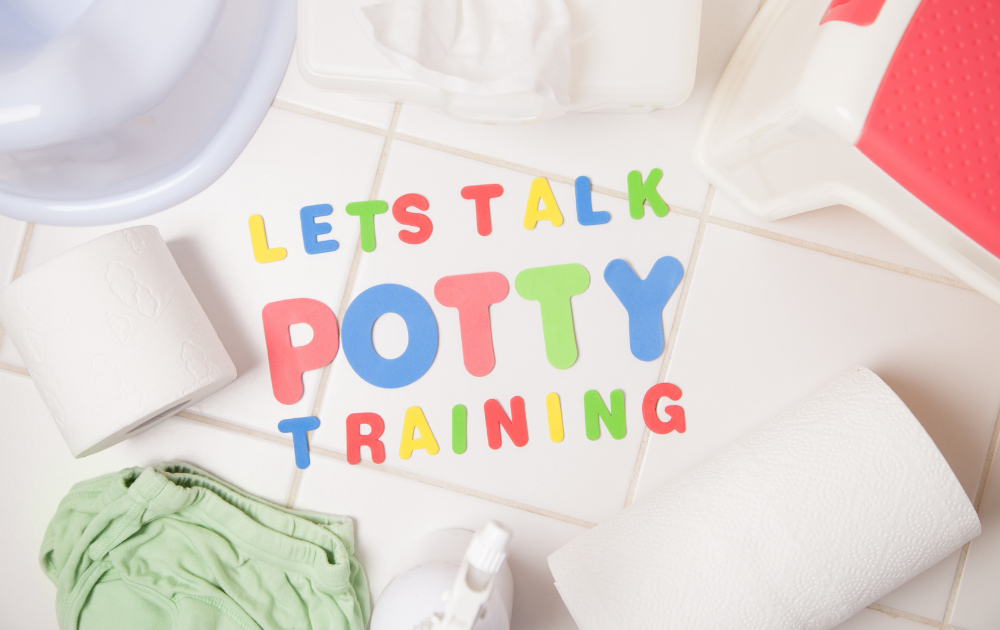
20 Jul Potty Training 101: Help Your Child Meet the Potty Training Milestone
Potty training is one of those stages in a child’s development that many parents approach with apprehension, particularly first-time parents.
They wonder if there is a set-in-stone method of successfully getting their child to transition from diapers to the toilet, and how will they feel if there are problems with the process?
But here’s the thing: typically no child gets to kindergarten without being potty trained, so relax! Your child will get there, just like you did, and just like your parents did before you. Even if there are accidents along the way (and probably there will be) your child will, sooner or later, actually want to use the potty. Here are a few signals your child will send when they are ready to begin potty training, and a few tips on how to make the process run more smoothly. And remember – some children are ready for the potty as early as 14 months, while others take until they are over three or four years old to get there. Your child is a unique individual, and how they get potty trained will be unique to them.
You’ll know they are ready when:
1. They show interest in older children’s underwear.
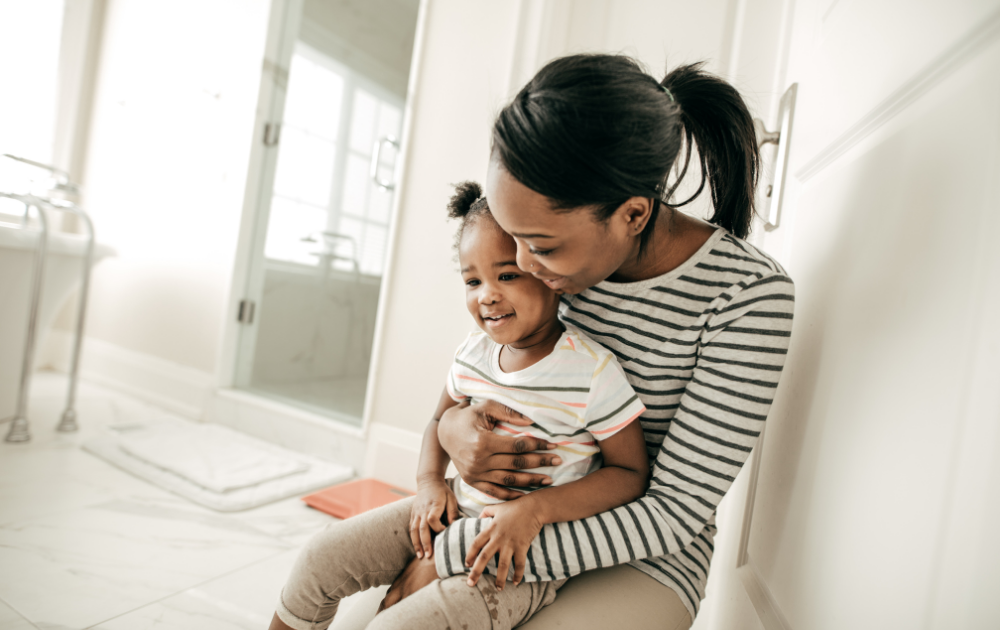
Often a toddler with siblings will express interest in, and want to look at, the undies their older siblings wear. This is the perfect moment to explain that they, too, will soon be wearing underwear like that. You can introduce the topic of potty training, and even show the toilet to them to see whether they want to try sitting on it.
2. They make it through a nap with a dry diaper.
If your child goes two hours or more, either during a nap or just for a prolonged stretch while awake without needing to be changed, they may well be ready for potty training.
3. They start asking questions and express curiosity.
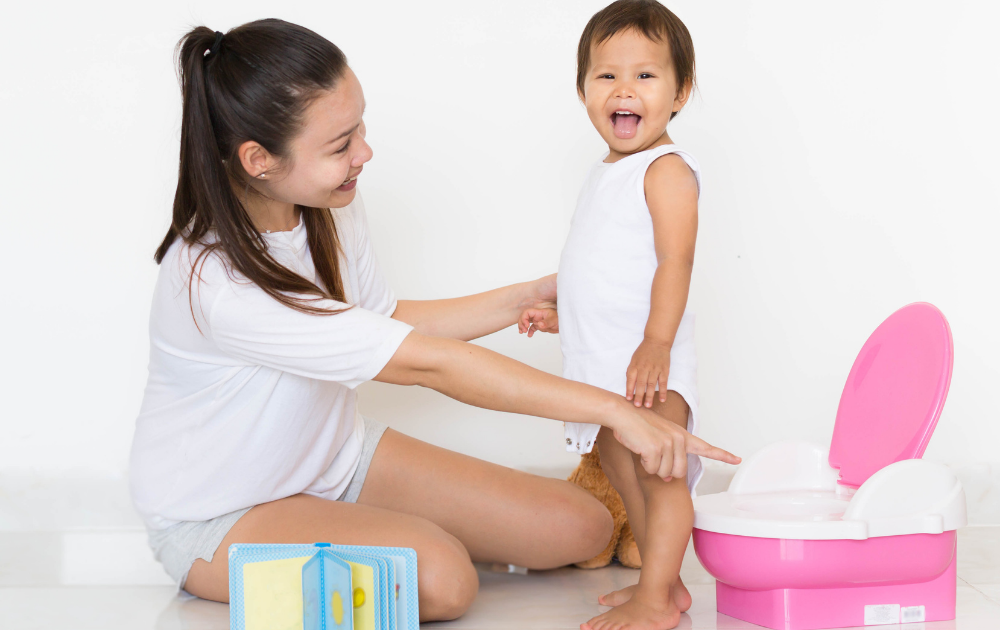
This happens frequently when a child has an older sibling, because they know the older child goes to the bathroom on their own and they may want to start keeping pace with their brother or sister. Respond to whatever questions they have, and ask if they’d like to try the potty. If they say no at first, don’t make a big deal of it; they’ll get there!
4. They don’t like wearing wet diapers even for a short time.
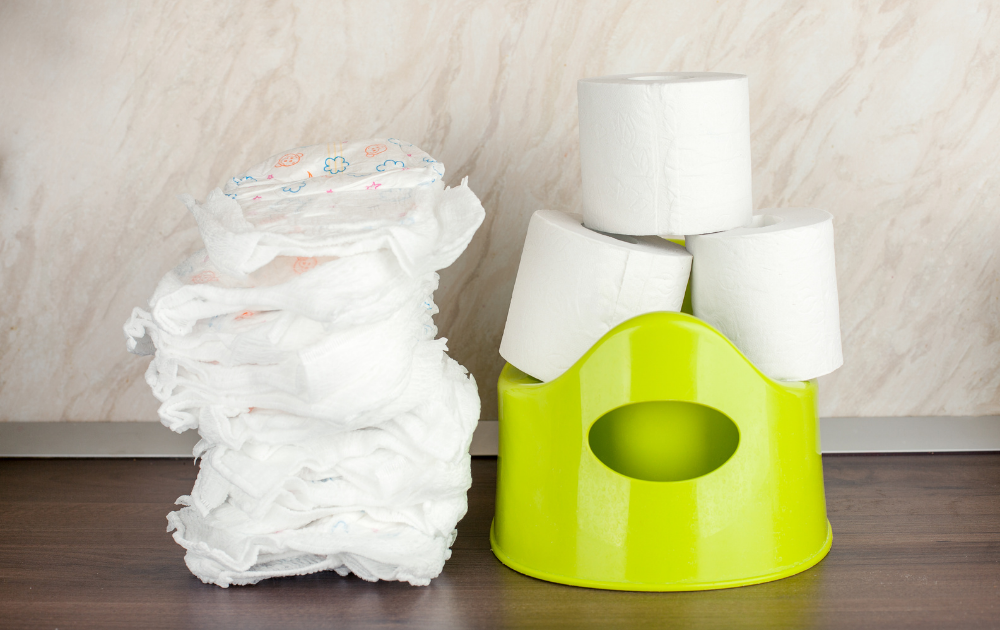
When toddlers start letting you know they dislike a wet diaper, it’s the perfect opportunity to introduce them to the potty. Tell them that potty training allows them to control their bathroom and hygiene habits. Doing so helps encourage them to “take charge” of their bodies.
5. They can understand and follow simple instructions.
If you’ve realized your child can comprehend and follow simple things, like “how about choosing a fresh shirt for today?” they are probably ready for potty training.
Remember, no one becomes an adult without being potty trained, so try to stay calm once you start the process – it will happen! Here are some tips to help you and your child get through this together, stress-free and happy.
1. Talk and read about it, perhaps with books and stuffed animals!
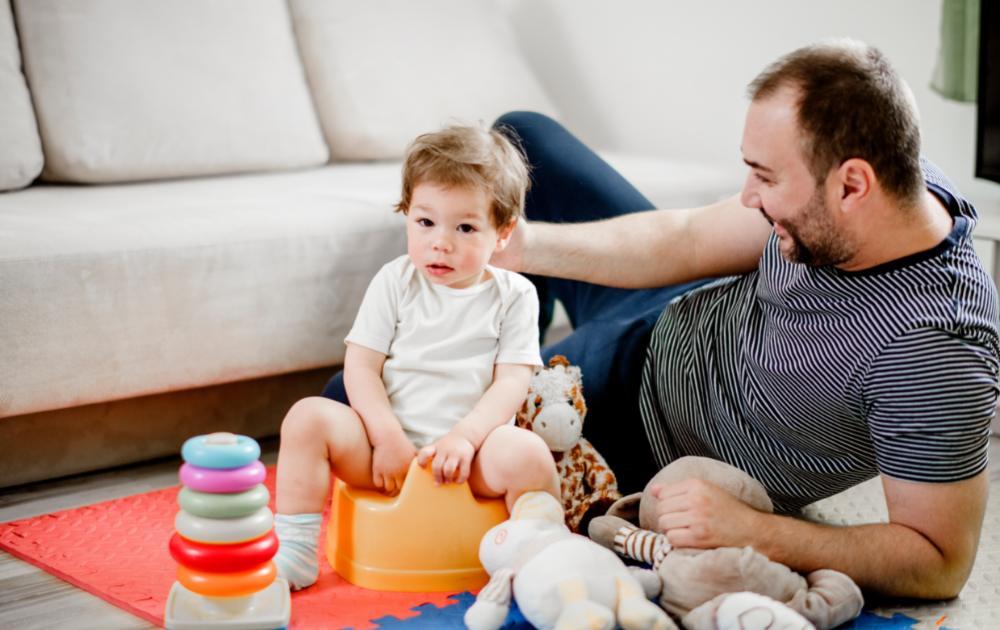
Bring the subject up when it’s bedtime, for example, and ask, “Do you think the Berenstain bear needs to go to the potty?” Conversations like this allow your child to ask questions (and voice concerns) about potty training before you actually start it.
2. Take them to the bathroom when you have to go.
Bring the subject up when it’s bedtime, for example, and ask, “Do you think the Berenstain bear needs to go to the potty?” Conversations like this allow your child to ask questions (and voice concerns) about potty training before you actually start it.
3. Expect nighttime accidents and be prepared.
An eight hour stretch with no diaper is long for your child, and chances are they may want to wear a diaper at night or, if not, they may wet the bed. Both of these are natural parts of the process, and it’s vital your child doesn’t feel bad if they don’t make it through the night successfully, particularly at the beginning. Just change the sheets, reassure them that tomorrow will be better, and shrug the accident off.
4. Follow an established schedule during the day.
Take your child to the bathroom in the morning, and of course throughout the day encourage them to tell you whenever they need to go. Soon they will start going on their own as soon as they wake. Make sure they go before bedtime, and you’ll reduce the number of accidents they have during potty training.
5. Praise them when it works, and never punish them.
Give them lots of hugs and kudos when potty training goes well, and never show disappointment or anger when it doesn’t. Children know instantly when their parents feel let down – it shows all over their faces. Never withhold praise and emotional support during this phase of their development. Your child needs to know you’re behind them, 100 percent.
Some children take to potty training easily and seem to sail through with almost no setbacks or accidents. Others take extra time, and face more hurdles. Don’t judge your child’s progress by another child’s, especially not a sibling. That sets up an unhealthy situation your child won’t be able to cope with during this time.
Potty training takes time, patience and acceptance of accidents, from both your child and you. So keep your sense of humor, be kind to your child and support them every step of the way during this crucial period.